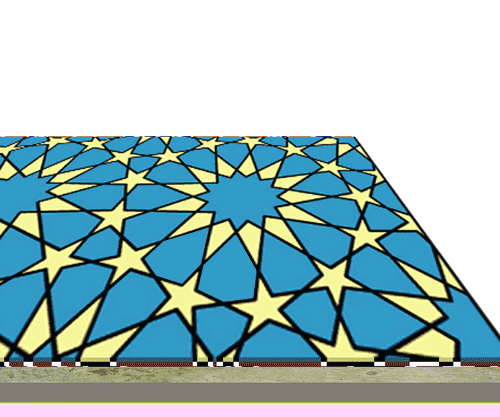 |
Date Winter 2004
Place Princeton, USA
Medium Photomontages, models, 5 min. video
Design context Part of the thesis project for M.Arch degree at Princeton University, School of Architecture
Credits Advisors: Jesse Reiser, Thomas Leisten |
|
|
Wudu Flock Inspired by the ablution spaces at the Islamic Cultural Center in New York City, the project Wudu Flock juxtaposes Islamic patterns with the patterns of worshipper behavior. As Islam was spreading from region to region throughout history, the existing traditions have been informing the design of distinctive art. The art of Islamic patterns can be understood as the unifying intermediary between the material and the spiritual world, which expresses the logic and order inherent in the Islamic vision of the universe. On the one hand, the infinitely repeating patterns can represent the Islamic doctrine of Unity expressed in multiplicity, al-Tawhid. On the other hand, they are based on strict mathematical rules, which symbolize the unchanging laws of God. Characterized by the "Pillars of Faith," Muslims are expected to observe certain rules. For instance, the notion of cleanliness (Taharah) is an important precondition of Islamic worship. Ablution, or Wudu, as it is known in Arabic, involves a ritual purification of the body and soul before performing obligatory prayers. Wudu, an essential part of the cleanliness, consists of both physical and spiritual purification. In this context, the declaring of one’s intention of self-purification before the actual washing process is as necessary the cleansing itself. While performing the Wudu, the worshippers would transfer their ablution slippers from one slipper-carpet to another. In this way, the geometric patterns of the slipper puzzles would create a visual analogy to religious rules of behavior.
|
||